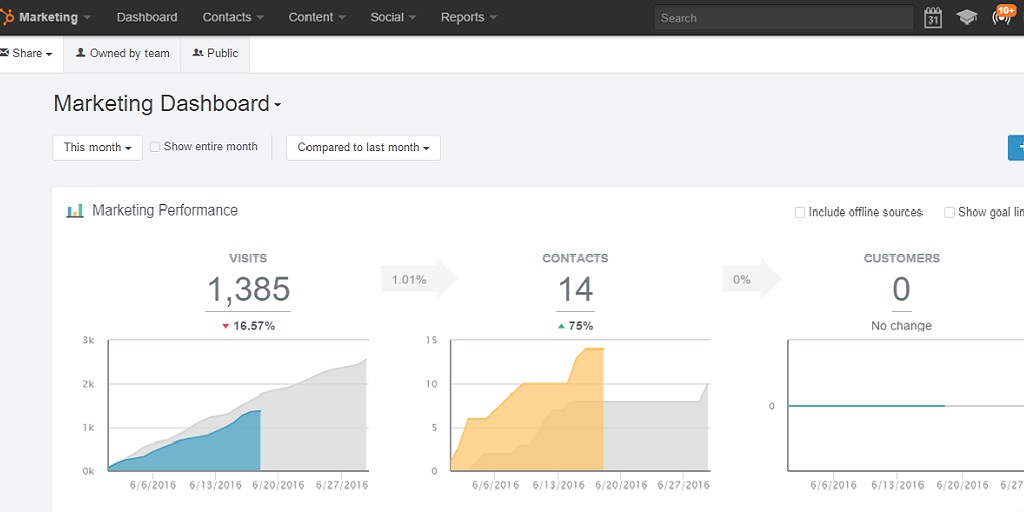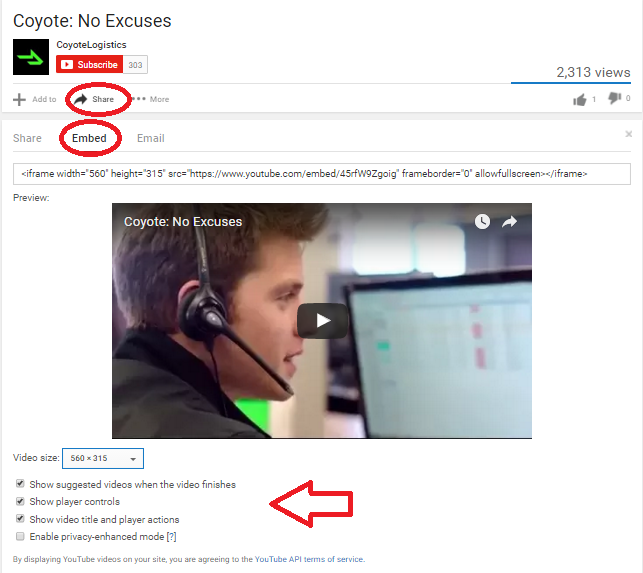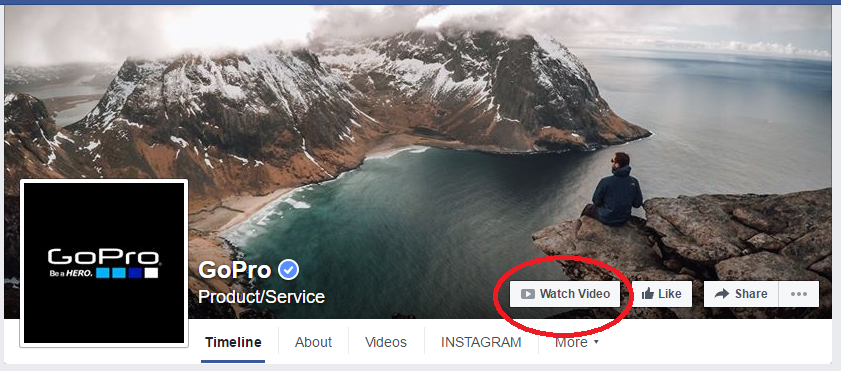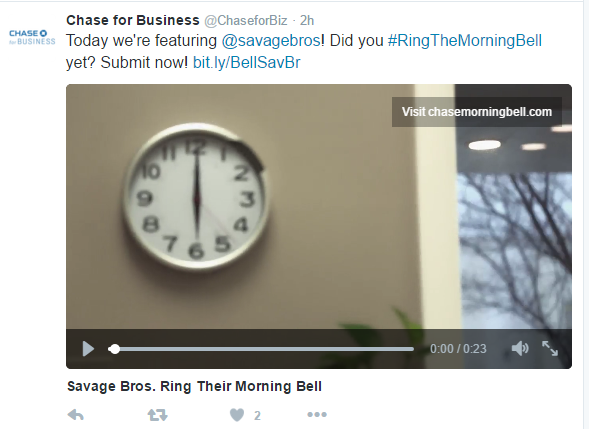
by Fronetics | Sep 20, 2016 | Blog, Content Marketing, Logistics, Manufacturing & Distribution, Marketing, Strategy, Supply Chain, Warehousing & Materials Handling
A content marketing strategy helped one organization generate leads, increase web traffic, and drive sales and new business.
Why would my company blog? Do we really need to be on social media? What is a white paper, and who would read one that I wrote?
These are questions that many businesses in the manufacturing and warehousing space might ask. They don’t see or understand how they might benefit from content marketing.
TotalTrax might have asked the same sorts of questions several years ago. The company, which provides tracking technologies for manufacturing and warehouse operations, had experienced positive year-over-year growth for a decade. The website got decent traffic. Yet, there was a sense that there were many untapped opportunities for growth.
TotalTrax hired Fronetics Strategic Advisors to create and implement a content marketing plan to maximize the company’s digital presence. TotalTrax wanted to see results in the form of increased web traffic, new and better leads, and revenue. Fast forward 24 months, and that’s exactly what happened.
Content helped TotalTrax to achieve:
- 19% increase in overall web traffic
- 500% increase in traffic from social media
- 244 high-quality leads
- 30% net increase in new customers
- 10% growth in sales revenue
To learn more about how Fronetics helped TotalTrax maximize results from a digital and content marketing program, download our case study below.

Related posts:

by Fronetics | Aug 23, 2016 | Blog, Content Marketing, Logistics, Marketing, Social Media, Strategy, Supply Chain

TotalTrax leverages content marketing to increase web traffic, generate high-quality leads, and, ultimately, grow business.
TotalTrax, Inc., is a provider of real-time vehicle, driver, and inventory tracking technologies for manufacturing and warehouse operations. Despite a decade of positive growth, the company knew it was missing opportunities for new business because of its lack of a clear digital strategy.
That’s why TotalTrax hired Fronetics Strategic Advisors. The firm created and implemented a multi-channel content marketing program designed to increase the company’s digital footprint and accelerate growth.
Content marketing can help a business elevate its brand position by producing content that demonstrates industry expertise, offers valuable information, and builds trust with their target audience. Example benefits include:
- Increased brand awareness
- Higher referral traffic
- Better lead generation and nurturing
- Improved customer loyalty and trust
- Decreased marketing cost and higher ROI
Fronetics evaluated TotalTrax’s existing digital assets. Leveraging extensive market research, the firm helped refine the company’s messaging and content distribution to better engage potential customers. Fronetics then implemented the customized content marketing strategy to help TotalTrax fully leverage its web presence to bring about new business.
The results
In a 24-month period, TotalTrax realized significant gains in web traffic, quality leads, and brand awareness. Key results included:
- 19% increase in overall web traffic
- 500% increase in traffic from social media
- 244 high-quality leads
- 30% net increase in new customers
To learn more about Fronetics’ strategy for TotalTrax, download the free case study below.

Related posts:

by Fronetics | Jun 23, 2016 | Blog, Content Marketing, Marketing, Strategy, Supply Chain

HubSpot users also saw 3x more leads and 4.1x web visitors per month after a year using the software.
A study has found that using HubSpot for your inbound marketing can increase sales revenue by 72% in 12 months.
A 2016 MIT Sloan student analysis showed that HubSpot’s inbound marketing software provides users a substantial boost in quality leads, which converted into more sales. In year two of using the software, customers continued to see impressive increases.
The in-depth report was a compilation of customer survey responses and web data gathered over a 24-month period for HubSpot users from 2013 to 2015. It looked at three fundamental aspects of marketing methodology:
- Attracting new visitors to the user’s website
- Conversion of these visitors into customer leads
- Closing those leads into actual sales
Leveraging tools to streamline and magnify marketing and sales efforts is important for all businesses in the supply chain and logistics industries, but it can be especially important if your business is small, or has limited resources. HubSpot proved to be a competitive solution, with cost-effective results that increased leads, customers, and revenue.
Report highlights
Attracting new customers
- Users averaged 3x more leads per month after a year.
- Websites averaged 4.1x more visitors per month after a year.
Conversion of website visitors into leads
- Approximately 83% of the HubSpot customers experienced an increase in their conversion rate of leads into customers.
- Size of the business did not matter; all saw significant increases in site traffic and lead conversion rates.
Closing those leads into sales
- 72% of HubSpot customers saw an increase in sales revenue in one year.
Other findings focused on substantial support in meeting goals and the ease of attracting the right customer persona for optimum results.
- 96 % of customers surveyed said that HubSpot helped them meet their marketing goals.
- 68% of customer respondents felt that their efforts generated better quality leads while using HubSpot.
- Increased customer satisfaction was reported by 46% of HubSpot users since they began using the program.
Is HubSpot right for your business?
HubSpot is a marketing platform that takes all of the inbound marketing methods that were once separate services and consolidates them into one integrated software package. It provides marketing analytics, lead intelligence, A/B landing page testing, CRM integration, email service integration, eCommerce integration, and API integration.
From one location, you can blog, tweet, optimize, then capture and nurture leads. It drives the right customers to you using extensive research specific to your industry. It pinpoints your competitors and potential customers, including their typical pain points, interests, and questions.
A separate 12-month study conducted by Overgo involving both B2B and B2C businesses compared companies using HubSpot to those who did not. It found:
- An average increase of 170% in organic traffic after one year, whereas those using HubSpot saw an average organic traffic increase of 590%.
- HubSpot received 125% more (B2B) and 294% more (B2C) leads than companies not using HubSpot. (Several of the B2B companies received fewer leads because their targets are multi-million dollar deals, a much smaller avenue of opportunity.)
The difference was attributed to the tools HubSpot offers its customers, which include:
- Ranking opportunities – a feature that shows which keywords offer your business an opportunity to get ranked on the first page of search results.
- Conversion opportunities – shows which keywords are attracting a lot of traffic but not converting, then suggests ways to increase conversion.
- Long-tail opportunities – suggests keywords where ranking could improve substantially if you add a certain word or phrase.
- Competitors – compares your site’s ranking and search volume to your competitors.
- Campaigns – helps organize keywords into campaigns for tracking and measurement.
HubSpot’s inbound marketing software has consistently provided a relatively fast and high return on investment for the majority of B2B or B2C companies, no matter their size.
Related posts:

by Fronetics | Jun 1, 2016 | Blog, Content Marketing, Marketing, Social Media

Improve the reach of your videos with these distribution strategies.
This is part three of a three-part series of creating videos for YouTube for businesses. Check out part one, YouTube for Business 101, and part two, Cheap and Easy Tools for Creating YouTube Videos.
If you have put the resources into creating videos for your business, you absolutely want as many people to view them as possible. Hosting them on your YouTube channel is an excellent start. But you can do more to ensure your videos attain their maximum reach.
Here are seven ways to share video content from your YouTube page.
1) Optimize your YouTube channel.
After you have uploaded a video to your YouTube channel, make sure your viewers can easily find and watch it. There are a few ways to do this.
Add it to a playlist.
Consider YouTube playlists like chapters of a book. They help your audience understand what your channel is about and navigate to the content that interests them. Playlists also represent a marketing and branding opportunity for you. For example, Southwest Airlines’ Fee Hacker Tips playlist includes humorous, 15-second clips on how to save money when flying other airlines. Or the Late Late Show with James Corden has a dedicated playlist for its popular Carpool Karaoke segment.
Here’s how to create a playlist. Once you’re done, make sure to add a description of the playlist to give your viewers an idea what it is about.
Use it as the channel trailer.
You can choose to have a video trailer play when a user visits your channel. Much like a movie trailer, this video will give visitors an idea of what your channel — and, thus, your business — is about and will entice them to subscribe. Lonely Planet, for example, uses their beautiful Best Places to Travel in 2016 video as an introduction to their content.
Here’s how to set your video as the channel trailer. You can also choose to have the channel trailer play only when an unsubscribed user visits your page.
Create channel sections.
Channel sections are like building blocks: They allow you to custom build your channel’s layout. You can create a section of particular videos, the most recently uploaded videos, a playlist (or playlists), and more, and then reorder the sections to best highlight the content you want to promote. Your channel can have up to 10 sections.
Here’s how to organize content using channel sections.
2) Embed in your blog posts.
Once your video is on YouTube, it is super easy to share and embed in places like your blog posts. That means the reader won’t have to navigate to YouTube from your post to watch the video: It will play right in your post. To get the embed link, click on the video you would like to use. At the bottom of the video, click “Share,” and then “Embed.” You can choose the player size, as well as other things like what plays after the video is done. YouTube will generate a customized embed code based on your preferences, which you can add to your blog post.

3) Post it to your Facebook timeline.
The number of videos uploaded to Facebook increased by 94% from 2014 to 2015, with more than 50% of Americans who use Facebook daily viewing at least one video per day. What’s more, 76% of people in the US who use Facebook say they tend to discover the videos they watch on Facebook. This makes having video content on your page almost a must-do.
You can post your YouTube video to your Facebook timeline by clicking the share button and choosing the Facebook icon under the video on your channel. Note that you can also upload a video directly to Facebook by clicking “Add photos/videos” at the top of your newsfeed. There are pluses and minuses to both approaches. Viewer activity on your video embedded from YouTube is included in your YouTube analytics. Uploading directly to Facebook means you will have to analyze your YouTube metrics as well as your Facebook video metrics to get an idea of how your video is performing overall. On the other hand, native Facebook videos have twice as much organic reach as YouTube embeds.
4) Add a call-to-action button on your Facebook page.
Drive viewers of your Facebook page directly to your video by creating a call-to-action button on your cover photo. To add, go to your page’s cover photo and click “Create Call to Action.” (Note: not everyone has this feature yet.) There are several options, including “Watch Video.” Action camera manufacturer GoPro makes use of this button, which leads to its YouTube channel feed on the GroPro site.

5) Use a Twitter Payer Card
Don’t just tweet about your video — actually tweet it! Twitter Cards allow you to attach photos, videos, and media experience to tweets that drive traffic to your website. Ensure your the actual video populates in your followers’ Twitter feed (instead of just a link to the video) with a Player Card. Here’s an example of what it looks like:

6) Give a sneak peek on Vine or Instagram.
Users can share short video clips on Vine (6 seconds) and Instagram (60 seconds). Though the videos you produce for YouTube will likely be longer, you can offer a sneak peek of the more robust content through these social platforms. You’ll reach a wider audience, and probably a younger demographic as well.This is important, keeping in mind that the B2B buyer profile is getting younger, too.
7) Pin it.
Pinterest is another social platform many B2B companies have yet to tackle. But with 100 million active users, there is a lot of untapped potential there. “People are planning out really core and important parts of their lives on Pinterest,” says Pinterest CEO Ben Silbermann. That includes career and professional endeavors.
You can embed YouTube videos directly onto Pinterest. Just click the “Share” button under the video on your channel.
Another thing to consider: Pinterest boards rank in Google searches. Create some boards around keywords you would like to rank for, post relevant content (like videos) that you’ve created, and watch SEO and the reach of your content improve.
Related posts:

by Fronetics | May 24, 2016 | Blog, Content Marketing, Marketing, Strategy

Outsourcing content marketing can cost a fraction of what dedicating in-house resources would — and you’ll get better results.
Nobody can do it all, despite what the latest motivational meme tells you. When running your business, it is vital that you focus on where you excel; sticking with your core competency is critical. Essentially, the more hats you wear in your company, the more watered down your efforts become.
Content marketing can be highly effective in generating leads and driving sales, but doing it right requires significant time and effort. If you are trying to manage content on top of overseeing key aspects of your business’ day-to-day operations, you are stretching yourself thin. What’s more, it’s negatively impacting your bottom line.
Why DIY content marketing can be costly
Many companies mistakenly think that managing their content marketing in house is simple, cost effective, and not time consuming. Actually, nothing could be further from the truth. Here is why:
Lost hours on your job
Taking time away from your primary focus prevents you from doing your job. If what you do best is new product development, for example, then dedicating hours each week to writing blog posts means that much less time for market research, design, and implementation. Those few hours away each week add up over time, and the cost to your company is significant.
Lost leads and sales opportunities
You may be a good writer and have personal social media accounts, but do you understand the ins and outs of creating and distributing content in a business setting? Professional content writers have expertise in search engine optimization (SEO), branding, user experience, and storytelling — all of which drive traffic and generate leads. Social media strategists similarly have expert knowledge of networking sites and how to best reach a target audience. If you don’t have that expertise, you are costing your company those opportunities — or, again, taking time away from your primary function trying to learn.
Lost readership and audience retention
If your content does not engage your audience, you shouldn’t have bothered in the first place. And engaging content doesn’t occur by happenstance. Research shows a strong correlation between content marketing success and strategy, documentation, and frequent check-ins. You need to know exactly who your audience is and what they want to read, and then you need a long-term plan for continually reaching them in new and interesting ways. Then you need to regularly assess your strategy and adjust as needed. As you can imagine, that all takes time and focus.
According to Forbes, outsourcing your content marketing is a cost-effective way to increase the success of your program. Essentially, you get expertise and experience — at a fraction of the cost of dedicating in-house resources — with no long-term commitment. By allowing experts to create strategies and leverage well-crafted, engaging content across multiple channels, you can improve lead generation and exponentially increase sales.
The Takeaway
By outsourcing your content marketing to the right firm, you can:
- Get professionally written, optimized content that engages your target customer and builds relationships.
- Benefit from the firm’s experience with content marketing for your industry and beyond.
- See results and ROI. The firm should put metrics on all of your marketing activities and deliver a regular report to you so you can monitor progress.
- Save time and money: You can focus on the core aspects of growing your business, while outsourcing your content marketing costs a fraction of dedicating in-house resources.
Simply put, it ultimately costs less to let experts create and execute your content. Given the reins, they can leverage their experience to produce greater results, capture more leads, analyze results, revise strategies, and, most importantly, free up your schedule to focus on your key responsibilities.
Related posts:










